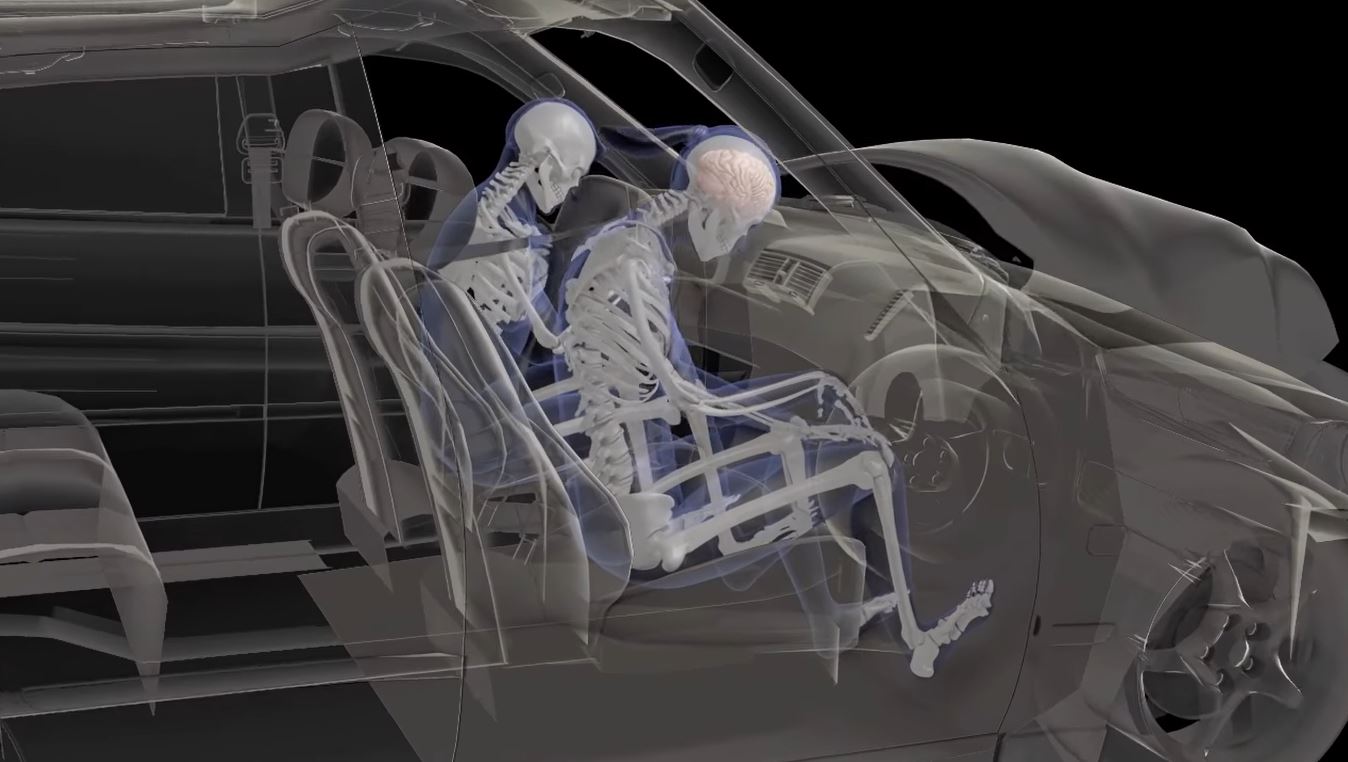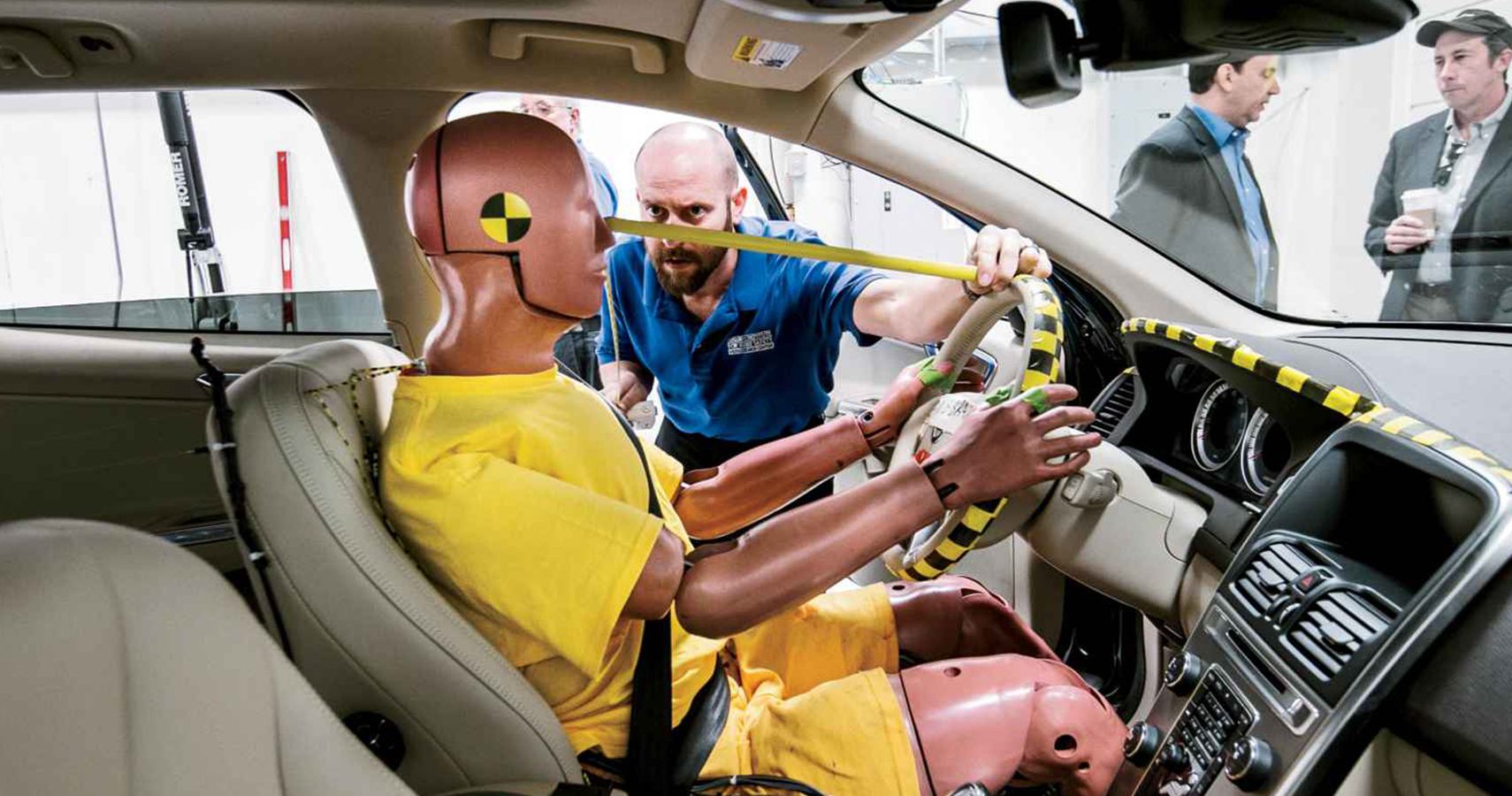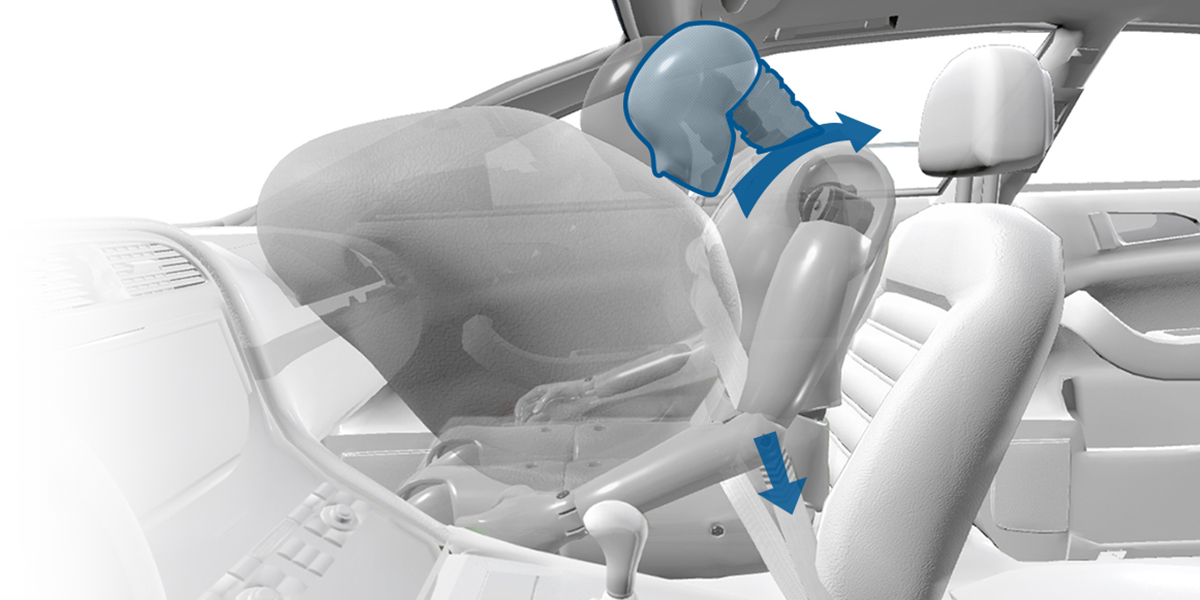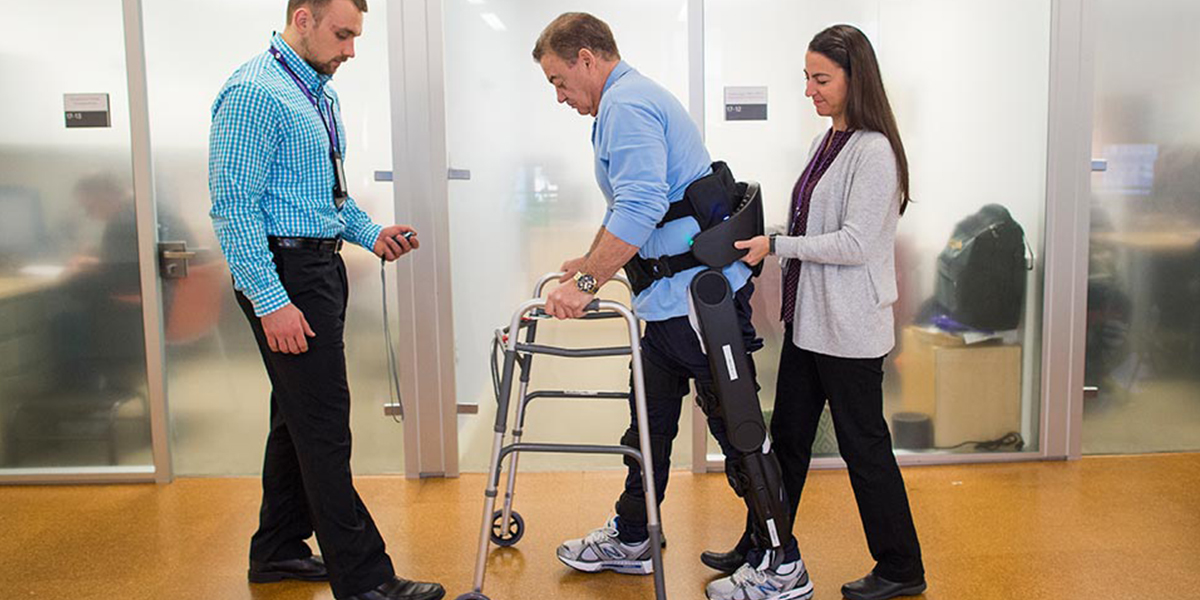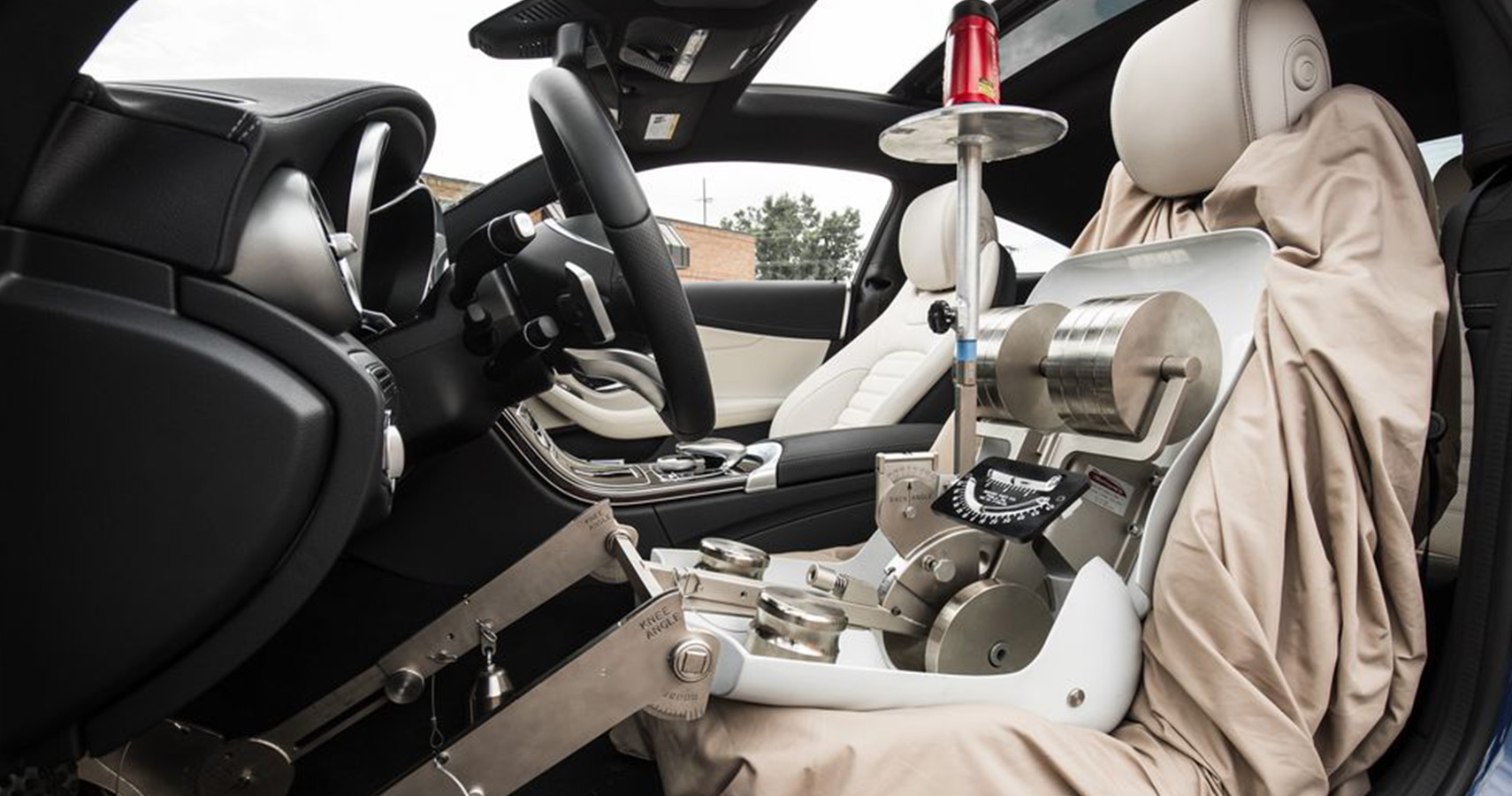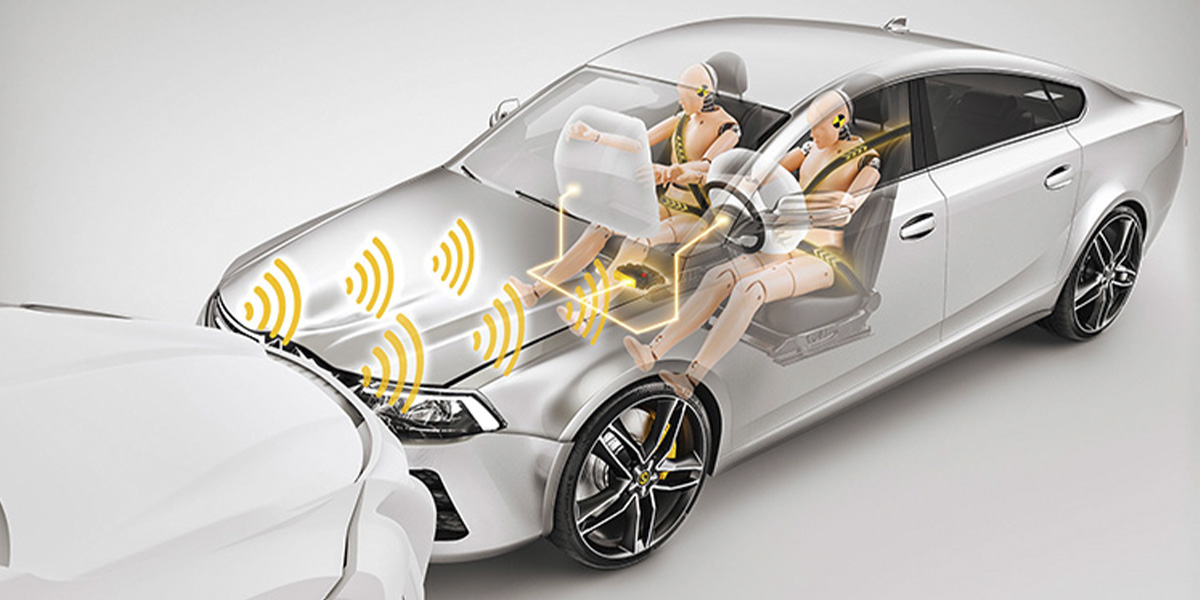To understand the effects of a collision on the human body, we must consider the driver was moving at the same speed as the vehicle before crashing. So, when a car collides with another vehicle or object, its structure experiences a violent deceleration transmitted to its occupants.
The strategy behind the design of current vehicles to protect passengers consists of preparing the car structure for a “programmed” deformation in a crash. This maintains a relatively rigid cabin that ensures its integrity and spreads the loads to other vehicle parts.
During impact, mechanical energy is “used” to deform, bend, compress and break the vehicle’s materials through the deformation zones programmed by the manufacturer.
With this, passengers experience less deceleration. The cabin surrounding them is subjected to lower loads which reduces the consequences of the impact. Otherwise, passengers would be subjected to all that energy.
The safety features of each car play an essential role in reducing the effects of physics on our bodies when being in a car accident. However, no matter how safe our vehicle is, the chances of suffering some injuries are always high.
Despite awareness campaigns, stricter laws to protect drivers, and increasingly safe cars, accidents, unfortunately, continue to occur.
Therefore, it is vital to understand the forces involved in a car accident and their effects and consequences on our bodies.
Biomechanics In A Car Crash
- Via: Rutamotor
Through injury biomechanics, scientists learn what happens to our bodies in an at-speed accident to develop tools that help mitigate injury and death in motor vehicle crashes.
Biomechanics is a science that tries to describe the damaging mechanisms explaining the injuries produced in the human body, through the integration from different disciplines: epidemiology, physics, and engineering.
Epidemiology describes harmful phenomena according to number, severity, and type.
Physics tries to reproduce the forces that have caused certain deformations and from this deduce the injuries produced. All this by studying the laws governing the motion of bodies and the kinetic energy produced in that movement.
Engineering tries to reduce the accidents rate with active safety and minimize the harmful consequences of an accident on people through passive safety.
Newton’s Laws are the fundamental pillar that supports the principles of biomechanics reduction of injuries. Thus, we will cite various energy laws that we need to consider when we get the history of the accident phase.
The energies released in trauma and that govern injury biomechanics are based on the movement of which the violating agent is animated and interpreted according to the Laws of Newton. Injuries occur when a particular body structure sees its endurance limit exceeded by the energy to which it is being subjected.
- Via: Bosch
Considering this concept, we see that if we drop an egg to the ground, the shell breaks; however, if we drop the egg on cushions or some elastic, deformable surface, the egg survives the impact.
The reason is that part of the kinetic energy resulting from the motion of the falling egg will dissipate in a deformation of the molecules of the cushions. This leaves residual energy that is less than the resistance of the surface. Thus, when slowing down a moving object, its momentum force must be transmitted to another body.
This energy transfer also occurs in case of an accident in the human body. The dispersion of kinetic energy, both in space as in time, is decisive for reducing the severity of injuries and can lead to the difference between life and death.
What Are Common Injuries From Accidents At Speed?
- Via: NYU Langone Health
Although the loss of life is the fact that we most regret, great importance is also attached to those victims who manage to survive. The severe injuries suffered in some cases also pose a tremendous human drama. Therefore, institutions and car manufacturers do not waste efforts to reduce them as much as possible.
According to the NHTSA, injuries to the torso are the most common on both fatal victims and survivors. Spinal injuries are the least frequent, although no less severe for this reason.
Torso and Chest Injuries
Here we must distinguish between thoracic trauma and abdominal trauma. The first can involve the rupture of large vessels and the involvement of the respiratory tract. On the other hand, abdominal trauma can affect internal organs (mainly the liver and spleen).
In any of the two scenarios, one must take special care of the so-called closed thoracic injuries, which do not manifest externally and are challenging to detect. In addition, rib fractures are also common because of improper use of the seat belt.
Brain Injury
We are talking mainly about traumatic brain injury (TBI), where the loss of consciousness and skull fracture occur at the accident. The severity of this type of injury varies between full recovery after the recovery period and the vegetative state of the patient.
They are part of the so-called Acquired Brain Injuries (ABI) because they suddenly burst into the victim’s life and affect their autonomy and quality of life.
Head, Neck, and Face Injury
We refer to scratches, abrasions, and fractures (in the most severe cases) produced mainly by impacts against the dashboard or the windshield. Even airbags pose a risk in the event of an accident if the occupant was unbelted or improperly restrained.
Other consequences are the perforations caused by some metallic parts of the vehicle, which can compromise vital arteries or the respiratory system itself.
Limb Injury
Although fissures or sprains of the wrists, knees, etc., are more frequent, open fractures and even amputations are common in serious accidents. Thus, motorists are more likely to suffer more severe limb injuries.
In the recovery process, long sessions of rehabilitation and physical therapy are also often necessary.
Spinal Injury
The vertebrae are one of the most severely damaged when a traffic accident occurs, especially those produced by reaching another vehicle. Among the most common injuries is a cervical sprain (often called whiplash), caused by sudden flexion of the neck. In addition, a cervical sprain can lead to other damages such as headaches or dizziness.
Recovery is usually slow due to the fragility of the vertebrae. Therefore, it often requires immobilization and the use of a collar during the process. It can also cause other damages such as headaches, dizziness, neck pain, even alterations in mood.
Spinal Cord Injury
When the spinal injury is especially severe, spinal cord damage can occur, with internal injuries and impact fractures being the most common causes.
Spinal cord injuries can cause paraplegia, tetraplegia, hemiplegia.
Unlike the injuries of the vertebrae, in this case, it is the nervous tissue that is affected. As this nervous tissue is in charge of transmitting the brain’s orders to the parts of the body, there are different degrees of injuries. This depends on the affected spinal area: paraplegia, tetraplegia, or hemiplegia.
In recovery, rehabilitation with physical therapy is essential to regain mobility (sometimes irreversible) and avoid deformities or respiratory problems.
In the case of the average accident victim, some claim feeling sore for a few weeks resulting from a car crash. The Patel firm says it’s not uncommon to feel soft-tissue injuries for six to eight weeks post-accident.
How We Can Reduce Injuries From An Accident
- Via: Michael Simari / Car and Driver
Believe it or not, it is our power to avoid many of these injuries by maintaining a good posture in the seat. Do you remember the advice on how to sit in the occupational risk courses that they teach us at work? Inside a vehicle, it is the same, whether we are the driver or not. With the aggravating circumstance, a traffic accident will push our resistance to the limit. So, let’s look at some of the guidelines we can follow to minimize damage.
Seat Height
As in many respects, the ideal is a middle ground. We must have our seats high enough to have good visibility of the road and low enough to see the dashboard easily. In addition, a suitable height will allow the seat belt to grip us better in the event of an impact.
Distance Between Seat and Pedals
We must place ourselves at a distance that allows us to step on the clutch fully with ease and have our legs slightly bent. In this way, in addition to gaining comfort and avoiding stiffness, we will ensure that our legs and not our hips absorb the impact in the event of a frontal collision.
Backrest Position
Neither as in the dining room chair nor as in the living room sofa. Our seat should be straight but slightly thrown back, just enough to support our back and head perfectly. If we are very reclined, we could slip out of the seat belt in the event of a frontal collision, and it could hang us at the neck.
Steering Wheel Height
Of course, we must be able to sit without our legs or belly colliding with the steering wheel. But also, that we can hold it with ease and comfort in the famous ten past ten clock position. If we go with our arms outstretched, the risk of fractures in the event of a collision increases.
The Challenges of the Automotive Industry
Unfortunately, the structure of today’s commercial vehicles is not capable of absorbing all the mechanical energy generated in a high-speed vehicle crash. Therefore, the crash tests use a maximum speed of 40 mph in a frontal collision. Also, considering that the barrier the vehicle collides with is deformable and absorbs a part of the energy generated in the collision.
Previously, the test was carried out at a lower speed of 35 mph, so the regulations are becoming more restrictive so that the tests increasingly resemble an actual situation.
A collision at high speed between two passenger cars or a slower speed between a passenger car and a truck or a rigid object such as the trunk of a large tree or a concrete wall is initially inelastic. In contrast, the vehicle absorbs the mechanical energy generated. Still, it is immediately transformed into elastic (the car bounces) when it cannot absorb more energy.
Vehicles are getting lighter and lighter (they have lower mass) mainly because manufacturers, consumers, and regulatory bodies pursue lower fuel consumption and less pollution. This improves the vehicle’s performance and has a somewhat lower kinetic energy at the same speed (due to the lower mass).
The drawback is that modern cars have great acceleration and can reach a high speed quickly. This causes accidents to occur at higher and higher speeds. Still, modern vehicles offer more sophisticated safety features than old cars. Because although old cars were slower, their rudimentary designs and materials turned them into death traps.


